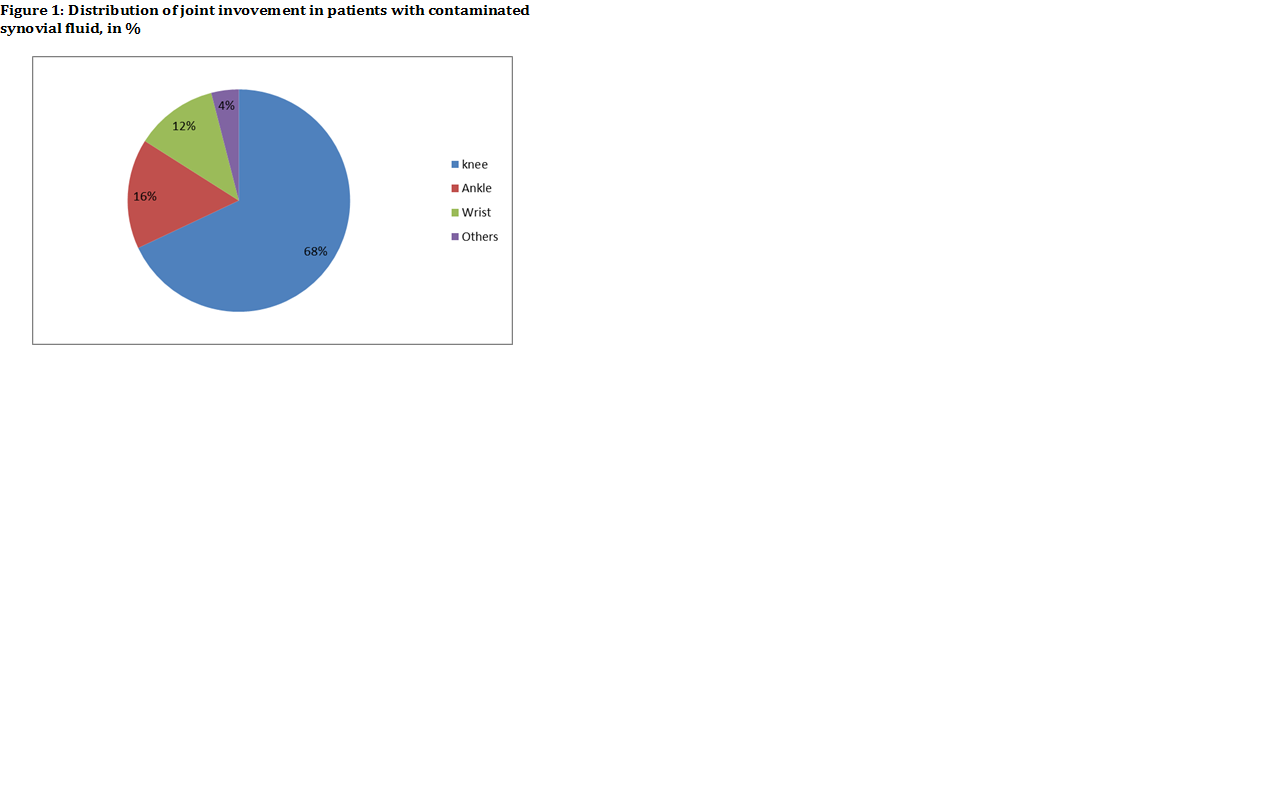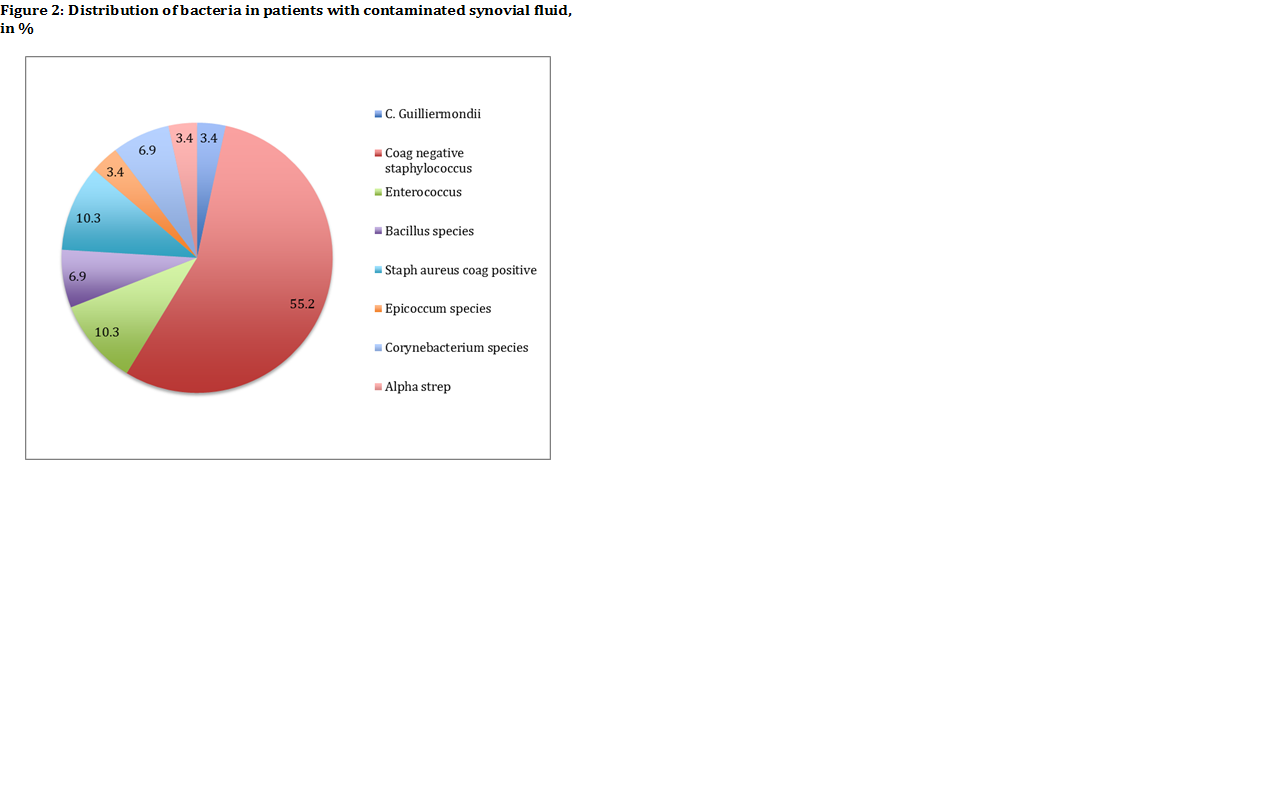Session Information
Session Type: ACR Poster Session B
Session Time: 9:00AM-11:00AM
Background/Purpose: Isolation of bacteria from synovial fluid (SF) is the gold standard for the diagnosis of septic arthritis (SA). However, false positive culture results (contamination) can result in misdiagnosis and mismanagement. Little is known about the microbiologic profile of contaminated SF (cSF) cultures, the clinical presentation of such cases, outcomes and rates of alternative diagnoses. The purpose of this study is to characterize the demographic features, clinical characteristics, microbiology and outcomes of patients diagnosed withcSF and to compare them with patients with SA
Methods: We conducted a retrospective study including all patients ages 18 and older admitted to a single, tertiary-case hospital between 1998 and 2015 with suspected SA with positive SF cultures. The diagnosis of cSF was determined by infectious disease specialists involved in the patients’ care.
Results: 371 patients with SA and 25 patients with cSF were identified. The groups were significantly different with regard to age (58.9 vs. 68.2; p<0.01). The most frequently involved joint was the knee but ankle involvement was relatively more common among those with cSF (Figure 1). The clinical presentations were different between the groups: 35.3% of the patients with SA and 16% of those with cSF presented with fever (p<0.01); ESR and CRP were significantly higher in the SA group (76.1 (mm/hr) vs. 52.3 (mm/hr) and 145.3 (mg/L) vs. 64.4 (mg/L) respectively; p<0.01 for each comparison). Similarly, the mean SF white blood cell count (in thousands) was higher in the SA group (89.2 vs. 36.7; p< 0.01). The mean number of days until the first positive culture results in the group with cSF was 3.2 days. The most common organism identified in the cSF group was coagulase-negative staphylococcus [Figure 2]. The mean length of stay (11 vs. 6.2), ICU admission rates (15.9% vs. 4%) and rates of alternative diagnoses (1.3% vs. 36%) within one year were significantly different (p<0.01 for all comparisons) between patients in the SA and cSF groups.
Conclusion: This study suggests that cSF is identified in up to 6% of patients with suspected SA and positive SF cultures . These patients present with less severe disease, better outcomes and an alternative diagnosis in 36% of the cases within one year. The unique characteristics of this group include their less severe presentation and delayed and minimal growth of organisms with low pathogenicity. Based on this study, we recommend a conservative approach for patient with suspected SA with mild disease manifestations and no growth of pathogenic organisms within the first 48 hours.
To cite this abstract in AMA style:
Zhu C, Fowler ML, Lieber SB, Moore A, Shmerling RH, Paz Z. The Positive Synovial Fluid Culture: Septic Arthritis or Contamination? [abstract]. Arthritis Rheumatol. 2015; 67 (suppl 10). https://acrabstracts.org/abstract/the-positive-synovial-fluid-culture-septic-arthritis-or-contamination/. Accessed .« Back to 2015 ACR/ARHP Annual Meeting
ACR Meeting Abstracts - https://acrabstracts.org/abstract/the-positive-synovial-fluid-culture-septic-arthritis-or-contamination/


